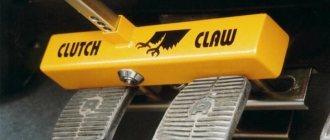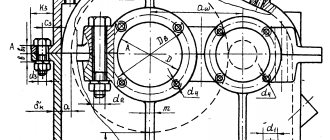Hunting enthusiasts, competitive shooters, and owners of other types of weapons are sometimes forced to transport their guns in their cars. And what? There's shooting on every corner in America, and we can't even transport a gun. Why? Can! You just need to do it correctly. But the laws are constantly changing and transforming.
Officials never tire of surprising drivers with various innovations. They often also apply to those who transport weapons in vehicles. Most often this has to be done, for example, by hunters. If you start delving into the texts of laws such as “On Hunting and the Conservation of Hunting Resources”, as well as the document “On Weapons”, you can very easily get lost.
After all, documents can be interpreted in different ways. How to transport weapons anyway?
For transportation only!
Long-barreled weapons may be taken out of the house only for transportation to hunting, storage, sport shooting, registration or repair. The owner of the trunk should know that if something happens, he will have to explain to the policeman where he is taking his wealth.
You must have with you an identification document (that is, your passport) and permission obtained from the police. By the way, in some regions of our vastness, for example, in the capital, employees of licensing and permitting departments are not asked to carry smooth-bore guns for re-registration. Owners of a rifled carbine will have to find time to go through the test shooting procedure.
Meat, fish, animals with valuable fur
If you are carrying in your car or trunk a large part of an animal carcass purchased at the nearest butcher shop, make sure you have documents confirming the legality of purchasing the meat. For what? The thing is that the traffic police inspector may suspect that you are transporting an illegally obtained wild animal. For example, if you are transporting part of a large pig carcass, a police officer may think that you are transporting a wild boar carcass.
A similar problem can especially arise near hunting grounds during periods when hunting is prohibited. You understand that the traffic police inspector may have doubts about the legality of the origin of the carcass in the car. So in this case, you are guaranteed at least a few hours at the nearest police station if you do not take care of the accompanying documents for the meat.
The same goes for animals with valuable fur and fish. But the situation is even worse with caviar in non-factory packaging, which is very popular in Russia. What do you think a traffic police inspector should think about if he sees a large, non-factory jar of caviar or a bucket of freshly caught fish in your car? Especially if you are stopped near a protected reservoir. Be especially careful and careful when transporting animals and fish listed in the Red Book.
Do not forget that for illegal hunting of animals you may face a fine of 35,000 to 50,000 rubles with or without confiscation of hunting tools (Article 8.37 of the Code of Administrative Offenses of the Russian Federation)
see also
Transporting children without a seat in a taxi may subject the driver to criminal liability
Sports equipment or weapons?
Raids “on hunters” are common events at the State Traffic Inspectorate. Typically, such preventive actions are carried out on weekends. It is necessary for the traffic police officer to ask what kind of “barrel” the stopped driver is carrying. After all, transporting hunting weapons in a car has its own subtleties. If something is not in the car correctly, there may be problems. This means that the laws are still worth studying. It’s better to know it by heart.
Knowledge of the law can discourage law enforcement officers and even forestry representatives. By the way, the police may even be interested in a baseball bat. After all, not everyone considers it sports equipment. Few people in Russia play baseball. But you can ask the authorities: what article of the law says it is impossible to transport a baseball bat in the trunk, that is, what article of the law are they referring to? This can confuse the police.
Rules for transporting weapons in a car
First of all, to transport weapons, you must have a license for this type of weapon. This is very important, since the police have the right to detain a person if he transports a weapon without a license, and in some cases even fine him. According to the law, the purchase of a weapons license is only available to persons aged 21 or over. In certain cases, the minimum age for owning a weapon can be lowered to 18 years if a person has completed military service, or there are other valid reasons for purchasing a weapon. In addition, you should remember that to purchase a hunting firearm you must have a document confirming membership in a hunting club. The procedure for obtaining it is quite simple and inexpensive. However, without this document, purchasing a firearm becomes an impossible task.
You should also know that the purchase of firearms requires the candidate to have documents confirming membership in hunting clubs for five or more years, as well as a certificate of ownership of smooth-bore weapons
Regarding the actual process of transporting firearms in a vehicle, it should be remembered that when traveling internally within Russia, only five guns are allowed to be loaded into one vehicle. To comply with the rules for transporting weapons across the territory of the Russian Federation, it is necessary to first notify the nearest police department of such intention, agree on the transportation route, and also prepare the appropriate container. Only factory packaging or special containers are suitable for packaging weapons. Weapons must only be transported separately from ammunition. During transportation, all items must be in good working order, and the cartridges and gun must be securely fastened. It should be remembered that in some cases, especially if there are several guns in the car, the cargo may be accompanied by police officers. In this case, you need to place the weapon so that employees can constantly monitor it. In addition, the shipping box should be sealed before shipping.
It is important to remember: in the event of a vehicle breakdown during the transportation of weapons, all cartridges and guns must be immediately transferred to the nearest police department for temporary storage
There is no need to be afraid to transfer weapons for storage, since if the documents are filled out correctly, the likelihood of theft is almost zero. Much more dangerous are the consequences of untimely transfer of weapons to the police department.
Charged or not?
So, it has already been said above that residents of our country can take rifles with a rifled and smooth barrel for hunting, as well as smooth-bore weapons for self-defense, outside only for transportation. According to the law, the rules for transporting such weapons are as follows. A case is required for transportation. It is better that it covers the weapon completely. This also applies to traumatic weapons. Regarding the issue of “charge,” the main thing here is to understand which “barrels” are considered charged? For the average person, this concept is explained as follows: the cartridges of a gun must be removed from the barrels.
By the way, they should lie separately. The horn of the carabiner must be removed. The head office of the Ministry of Internal Affairs thinks quite differently. “A weapon is considered loaded when a cartridge is inserted into the chamber and the firing mechanism is cocked” and, “hence, a weapon with an attached loaded magazine is not loaded.” These formulations are from 2008. A corresponding letter from the permitting system exists. You can print it out and always carry it in your car. It’s just that not all law enforcement officers are aware.
What is a hunting weapon
Federal Law No. 150-FZ dated December 13, 1996 states that a weapon is a device or object intended to hit a living (or other) target or send signals.
A firearm is a device designed to mechanically destroy a target at a distance using a projectile that is propelled by the energy of an explosive charge.
Civilian firearms can be used for hunting.
Types of hunting weapons
Hunting weapons are:
- Firearms: a) long-barreled with a rifled barrel; b) smooth-bore long-barreled (this also includes devices with a rifled part length of up to 140 mm); c) combined long-barreled (this category can also include mechanisms with inserted or interchangeable rifled barrels).
- Pneumatic with muzzle energy not exceeding 25 J.
- A cold blade that hits a target using a person’s muscular strength.
Is this a search?
Anyone transporting firearms “things” needs to know what a State Traffic Inspectorate employee can check and what they cannot. First you need to ask why the stop was made, then present documents. For a car. You should not show your weapons permit right away. Additional questions should be answered in the negative. Drugs? No. Prohibited items? No. It is better to immediately open the trunk at the request of the officer, but the policeman should not climb into the car, because he simply does not have the right to do this.
The search is carried out only in the presence of witnesses and with the preparation of a protocol. And this is just a visual inspection. If the gun is not in plain sight, it may not be noticed. On a forest road, a forester can try to stop a car, but without a law enforcement officer, he has no right to do this.
In public transport
Transporting traumatic weapons on an airplane, or rather in the cabin of an airplane, is prohibited. But this does not mean that transportation is impossible. Weapons are checked into separate baggage and can be released to the owner only upon arrival at the destination airport.
A citizen who is going to fly by plane must have a transportation permit with him, since he crosses the borders of his region of residence. When checking in for a flight, he contacts the airline's security service and indicates that he intends to carry a traumatic vehicle. An act is drawn up indicating the model and number of the weapon. According to this act, you can then get your own gun.
When traveling on a train, you will have to hand over your weapons to the train foreman. But if you bought a ticket in a compartment and are carrying a traumatic pistol with you, then it is allowed to carry it provided that the weapon is unloaded and hidden in a holster.
Import and export of weapons from the country
In order to cross borders with a weapon in the trunk, you must fill out a special permission form. All this is preceded by certification of trunks. But you can carry a weapon without certification in several cases:
- there is a declaration of conformity or certificate;
- according to an international treaty, moves within the Russian Federation;
- imported temporarily for hunting, participation in historical, cultural, sports exhibitions or events.
The transit of weapons through our country must be accompanied by obtaining a license from the customs authorities of the state. Weapons imported and exported from Russia must undergo customs inspection.
Pneumatic classification
1) Pressure up to 3 J, calibers from 6 to 8 mm (maybe more), with plastic balls. It is practically a toy, used in games. You've probably seen everything like this in toy stores. It cannot cause serious harm to either humans or animals, even if fired at close range. Often the case is plastic, although it copies a real weapon. According to the law, it is not a weapon and is intended for entertainment.
2) From 3 to 4 J, with steel projectiles. Copies real weapons, steel body. It is also an entertaining weapon, although some models with a pressure of exactly 4 J are already equated to a sports weapon; it is advisable to have documentation with it to prove its characteristics.
3) Up to 7.5 J, steel projectiles, caliber up to 4.5 mm. Already a serious weapon, it is considered a sporting weapon, a permit is not required for it, but it can cause injuries to humans and animals. It is also advisable to carry a product passport with you to prove its characteristics.
4) From 7.5 to 25 J (calibers from 4.5 to 6.35 mm). It is considered a sporting and hunting weapon; it can kill both humans and animals from a certain distance. Sold only with special permits! Equated to combat.
5) More than 25 J, metal projectiles, any caliber. It is considered “combat” and is not sold in Russia. Some models are more powerful than some firearms. Licensing is also required.
What I want to say is that even the second type of weapon, which is from 3 to 4 J, with steel balls, has an initial projectile flight of 100 - 170 m/s. And this is quite a lot, so it can cause at least a bruise to a person. I’m already silent about 7.5 - 25 J! So you need to be careful!
Responsibilities of a weapons carrier
Thus, transporting weapons in a car requires preparation. After all, no one has canceled responsibility for the incorrect transportation of weapons, especially if negligence led to a tragedy. If the owner committed a violation when transporting “shooting objects,” he may be held accountable.
Provides for administrative punishment - a fine of 1,000 to 1,500 rubles. For improper transportation of a firearm “item” (with the exception of a civilian long-barreled smoothbore), a negligent owner may also face criminal prosecution. The punishment may be:
- restriction of freedom for up to 4 years;
- forced labor for up to 4 years;
- arrest for up to 6 months.
Fines under this article can reach eighty thousand rubles or the amount of income for three months.
How not to do it
Remember that transporting various types of weapons in a car is a difficult issue. Here you should not rely on your luck and take care of safety in advance. Most likely, law enforcement officers will notice you have dangerous cargo, and there will be a lot of problems. Plan everything in advance to save your time, nerves and purchased weapons. Responsibility for the illegal transportation of weapons may include not only confiscation, fine, administrative arrest, but even imprisonment in some cases, even if it has never been observed to be used outside the law.











